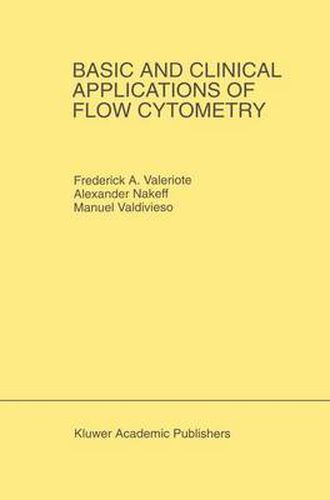Readings Newsletter
Become a Readings Member to make your shopping experience even easier.
Sign in or sign up for free!
You’re not far away from qualifying for FREE standard shipping within Australia
You’ve qualified for FREE standard shipping within Australia
The cart is loading…






This title is printed to order. This book may have been self-published. If so, we cannot guarantee the quality of the content. In the main most books will have gone through the editing process however some may not. We therefore suggest that you be aware of this before ordering this book. If in doubt check either the author or publisher’s details as we are unable to accept any returns unless they are faulty. Please contact us if you have any questions.
The focus of this symposium was on the present and future capabilities of flow cytometry for both medical and biological applications in cancer. This technology began with quite modest instrumentation, with limited capabilities to answer biological questions. Today, both the clinical workhorses and the powerful multi-laser, multi-detector, sorting machinery, coupled with sophisticated computers and storage devices and the increasing storehouse of markers and dyes, are taking us to the limit and beyond in finding answers to the cause and cure of cancer.
In the past, both normal hematopoietic tissue and leukemias have been the tissue samples of choice in the application of flow cytometry, and some of the most recent applications with these tissues are presented here. However, the book also discusses the increasingly sophisticated disaggregation techniques which allow investigators the possibility to train their lasers on solid tumors. Not only can we use flow cytometry with associated fluorescent markers to understand the biology of cancer, but also the wide array of existing and developing markers provides us with important diagnostic tools in the detection of cancer early in either the malignant or relapse process. And the field comes full circle, with the use of the technology for gene mapping and other genetic studies to unlock the basic malignant process.
$9.00 standard shipping within Australia
FREE standard shipping within Australia for orders over $100.00
Express & International shipping calculated at checkout
This title is printed to order. This book may have been self-published. If so, we cannot guarantee the quality of the content. In the main most books will have gone through the editing process however some may not. We therefore suggest that you be aware of this before ordering this book. If in doubt check either the author or publisher’s details as we are unable to accept any returns unless they are faulty. Please contact us if you have any questions.
The focus of this symposium was on the present and future capabilities of flow cytometry for both medical and biological applications in cancer. This technology began with quite modest instrumentation, with limited capabilities to answer biological questions. Today, both the clinical workhorses and the powerful multi-laser, multi-detector, sorting machinery, coupled with sophisticated computers and storage devices and the increasing storehouse of markers and dyes, are taking us to the limit and beyond in finding answers to the cause and cure of cancer.
In the past, both normal hematopoietic tissue and leukemias have been the tissue samples of choice in the application of flow cytometry, and some of the most recent applications with these tissues are presented here. However, the book also discusses the increasingly sophisticated disaggregation techniques which allow investigators the possibility to train their lasers on solid tumors. Not only can we use flow cytometry with associated fluorescent markers to understand the biology of cancer, but also the wide array of existing and developing markers provides us with important diagnostic tools in the detection of cancer early in either the malignant or relapse process. And the field comes full circle, with the use of the technology for gene mapping and other genetic studies to unlock the basic malignant process.